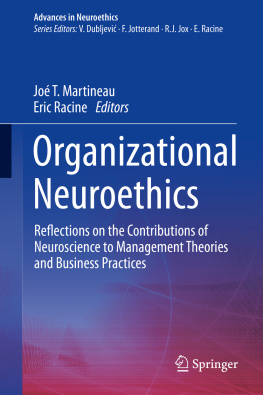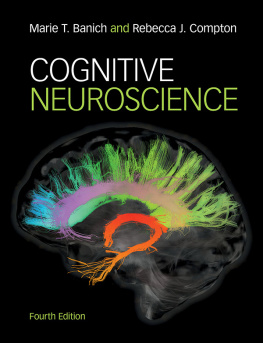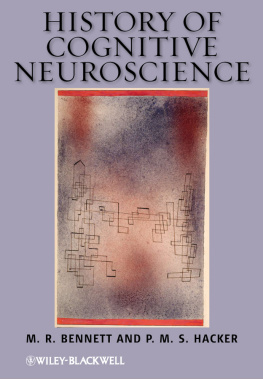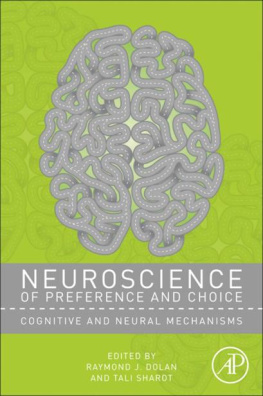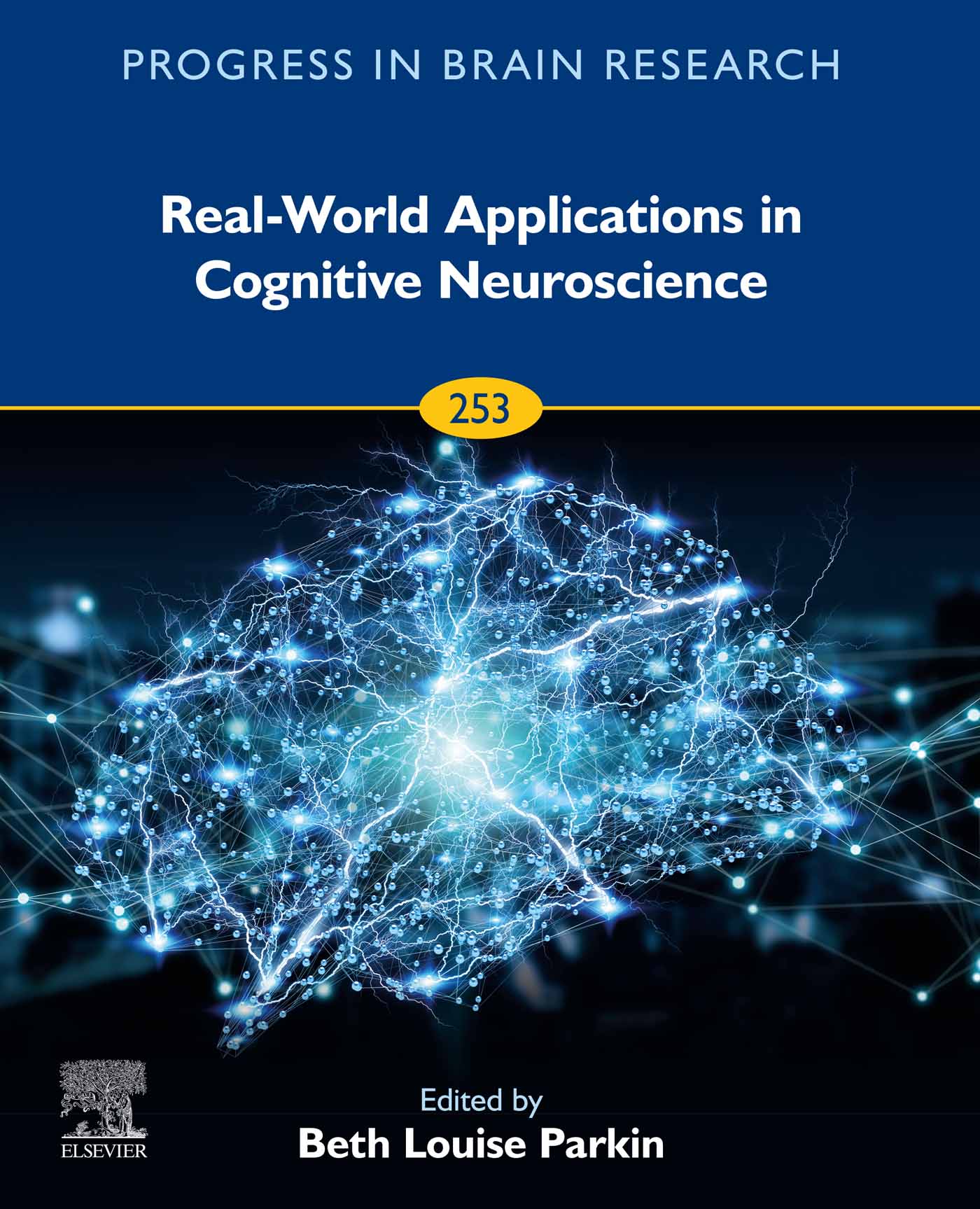Real-World Applications in Cognitive Neuroscience
First Edition
Beth Louise Parkin
Department of Psychology, School of Social Sciences, University of Westminster, London, United Kingdom

Copyright
Contributors
Preface
Beth Louise Parkin, Department of Psychology, School of Social Sciences, University of Westminster, London, United Kingdom
The challenge set in editing this volume was to give a picture of how psychology and cognitive neuroscience has reached the stage of intellectual maturity where we can ask how it serves our daily lives, commerce, and society. As we have seen with biological sciences and medicine over the past century, the discipline has moved from the gathering of knowledge and increased understanding of discrete processes of the body, to the application of improving almost every aspect of health. The volume is a reflection on this transition for psychology and cognitive neuroscience, examining how developments in our existing knowledge of the brain and mind can be used to achieve practical insights into applied human behaviors. The components of the human mind explored by psychology, for example attention, memory, perception, have remained remarkably constant over the past 50 years of psychological textbooks, yet the areas of life this discipline have ventured into is impressively broad. The work showcased in this Volume therefore spans a wide array of aspects of daily living which rely on our cognitive, physiological, and cyclical functions.
The opening chapter takes a direct approach to a consequential real-life problem; the impact of suboptimal conditions for mariners at sea. Djukanovi and colleagues highlight how psychology can make a tangible contribution to safety practices, by presenting a guide to understand the importance of dark adaptation during shift work and exploring decision-making at sea. The chapter is an exemplary case study in the difficulties of translating laboratory findings. Laboratory decision-making for example, is often studied by how much virtual money a subject is making on a computer-based task and rarely takes into account pressure. In reality, the mariners operate under the demands of commerce, in which virtual money is replaced by hundreds of lives or cargo worth millions of real dollars. The next chapter continues on the theme of light and dark rhythms by focusing on sleep. Sleep makes up 37% of our lives and is highly undervalued in today's society. As Santhi and Ball highlight it is often the things we take for granted that can have the greatest impact on our lives. This chapter outlines the two oscillatory mechanisms behind sleep and wakefulness, while explaining the importance of light as the zeitgeber that governs this vital process. It is important that, in this volume aimed principally at psychologists and cognitive neuroscientists, this work discusses photoreceptive retinal ganglion cells that make up 1% of cells in the eye. These have no function in vision but are entirely devoted to informing our brains of the time of day. The authors conclude by articulating the effect that the loss of these retinal ganglion cells have in the blind.
In Santhi and Ball we see the value of regulating a particular hormone, melatonin. The problem in studying hormones and cyclical functions is that they operate in circadian or ultradian rhythms. This means that data collection is slow and individual variability is high. Laboratory research on the impact of the menstrual cycle on behavior is no exception and may explain why it lags behind what we may expect. In the third chapter, Statham explores the impact of the menstrual cycle in decision-making and training of elite athletes. The work takes on this long-term problem area to provide insights into how physiology and psychology overlap to influence daily performance. Focusing on athletes allows Statham to bring the research area into a tractable sphere, controlling for fitness level, familiarity with pain, regularity of physical routine, and the physical and psychological goals of the experimental cohort.
Staying with sport the following three chapters remind us that specialist groups have been a bedrock of advance in the history of psychological science. The study of neuropsychological patients, for example, has been essential in the development of the discipline. In addition, we have seen the value of chess experts in helping to formulate theories of learning and memory. Sport is another area where we have access to people with extreme specialization, in which we can study skill acquisition and development. By using tasks adapted from the laboratory, Farahani investigates decision-making across the trajectory of elite footballers who make the journey through the academy system. Across these chapters, Farahani examines the influence of using different types and speeds of presentations of tactical scenarios, including real-time videos and 2D animations. The take home message here is that if we want to understand what an expert sees we may have to adapt our presentations to appear, to the novice, to be somewhat unrealistic (for example, professional footballers perceived real-time footage to be too slow). Of particular value in these chapters is that the author correlates data from a computer-based task with the assessments of professional football coaches. If psychology and cognitive neuroscience are to make the leap in affecting people's everyday lives, it's important to bring along the practitioners.
The next chapter is particularly timely as this volume will appear as the COVID-19 crisis (hopefully) abides and the world is faced with new financial conditions and choices to make in this context. Kabir covers the psychological and neural basis of economic decision-making, in the specific context of the limits of human rationality and the stresses induced by market trading. The wider principles of decision-making covered in this chapter are applicable to many other domains of our decision-making, particularly under pressure. The review is a good starting point for someone requiring an introduction to the subject area. Williams and Lewis then go on to discuss occupational neuroscience and the issues faced in the extension of cognitive neuroscience to the workplace. The authors openly accept the problem that neuroscientific methods are not designed for people working in dynamic environments, and identify two methods, EEG and fNIRs, that may be of use in naturalistic settings. In their exploration they address a number of problems in bringing psychology into the real world. The first is the noise in the data, simply because of the kinds of environments in which data is collected. The second is the type of tests that are suited for assessments. Most robust psychological tests are robust precisely because they tend to be insensitive to individual differences (visual search, n-back, etc.). However, in a setting where employers and employees are interested in individual differences, tasks must be selected based on different criteria. Third is the motivation and anxieties of the individuals who are being tested. We are not dealing here with data points for publishable experiments, but with descriptions of people which may incorrectly become self-fulfilling prophecies for career advancements or even self-belief. For example, it's very common for subjects to mistake state as trait results. It is an imperative that in translating findings to the work environment that employees and managers understand the meaning of the results. Williams and Lewis give serious consideration to these issues and are aware of the limitations of cognitive neuroscience in occupational settings.




